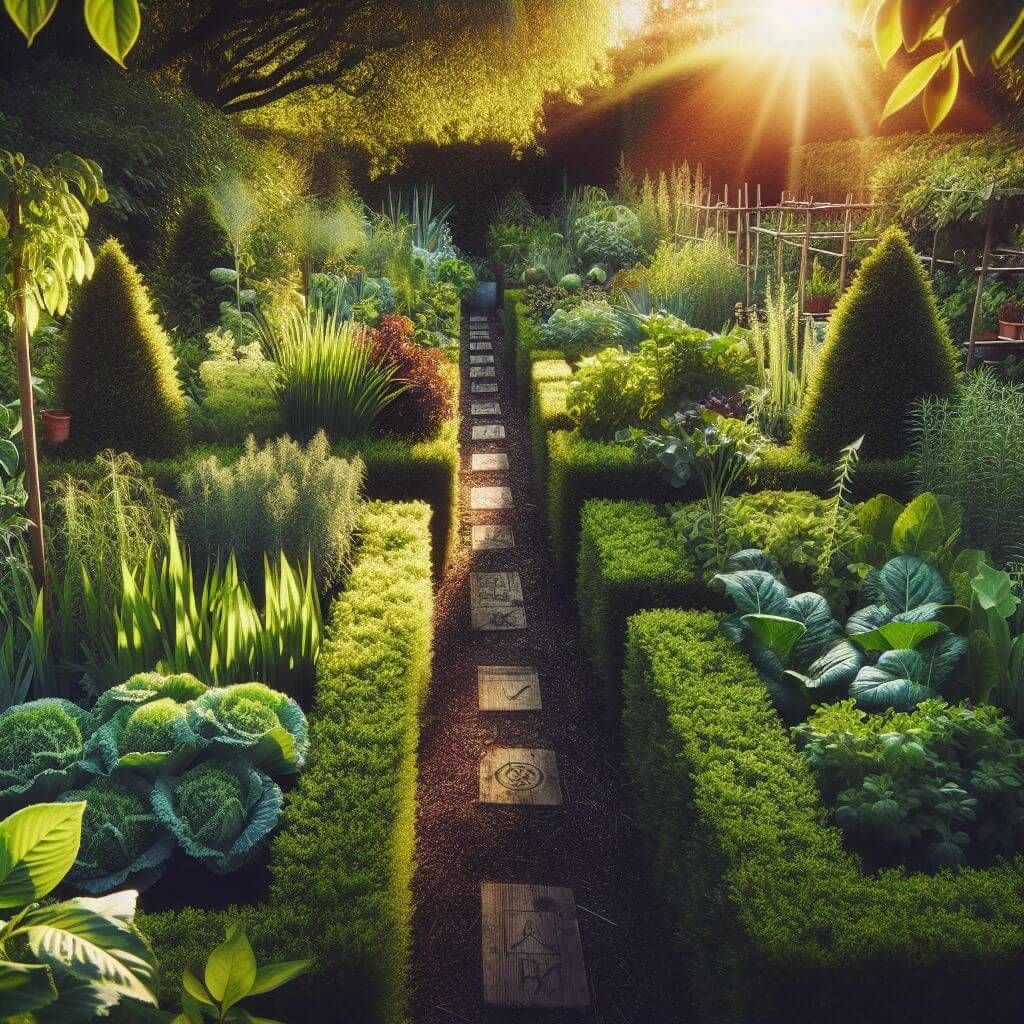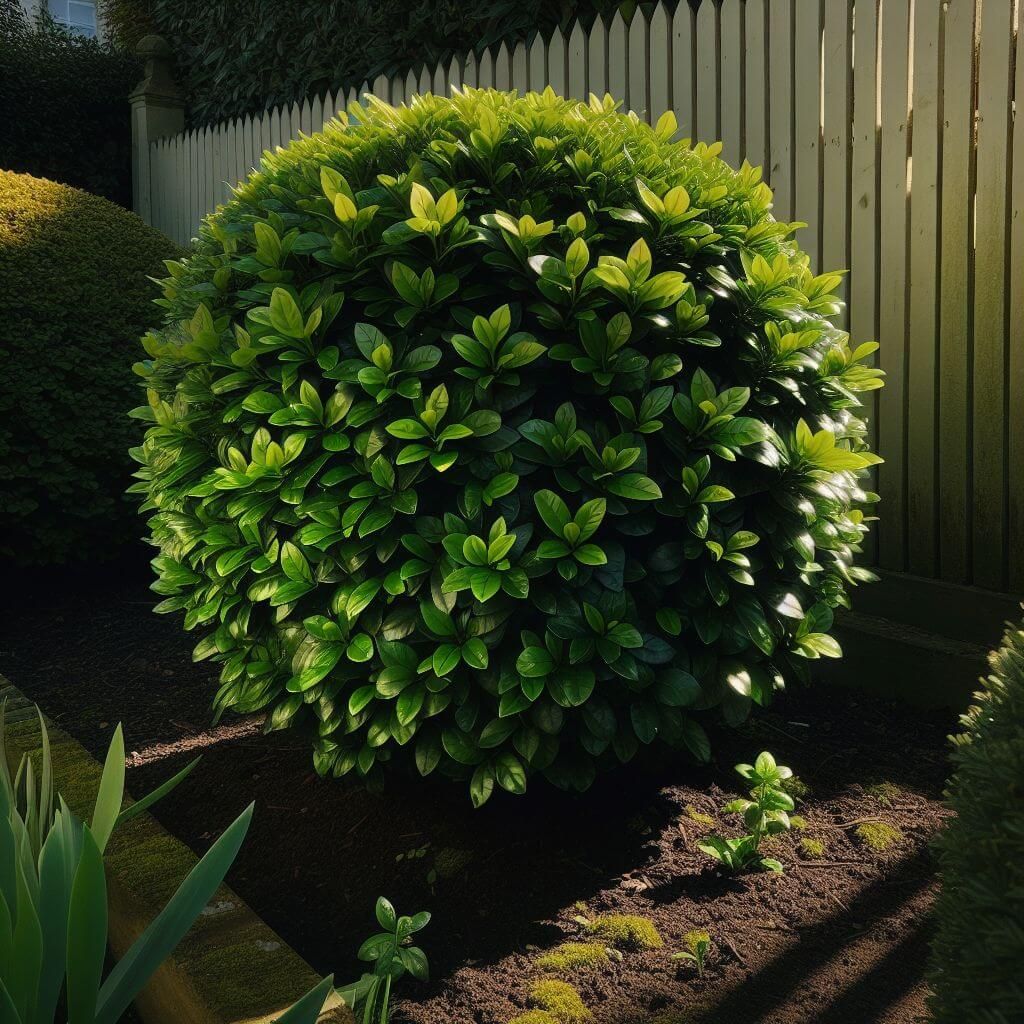
Key Takeaways
Hedge rows serve as a natural pest control method by creating barriers and habitats for beneficial wildlife.
Choosing the right plants for your hedge is crucial for effective pest management and promoting biodiversity.
Native plants are preferred for hedges as they’re adapted to local conditions and support native wildlife.
Aromatic herbs can be included in hedge rows to naturally repel pests with their strong scents.
Strategic placement and proper maintenance of hedge rows can enhance their effectiveness in pest control.
Growing Green Barriers: Hedge Rows as Pest Defenders

When you think of a garden, you might picture neat rows of veggies and colorful flowers. But there’s another, often overlooked hero in the sustainable garden: the hedge row. These living fences don’t just add charm; they’re a powerhouse in the fight against pests. Let’s dive into how these green barriers can shield your survival garden naturally.
The Basics of Hedge Row Planting
First things first, what exactly is a hedge row? It’s a line of closely spaced shrubs and sometimes trees, planted and maintained to form a barrier or to mark the boundary of an area. In the past, they were mainly used to fence in livestock, but now we’re seeing the incredible benefits they bring to gardens.
Most importantly, hedge rows are champions of biodiversity. They create microhabitats for a variety of creatures – from birds to bees to beneficial insects that keep pests in check. Plus, they’re a sustainable choice, requiring no harmful chemicals to maintain once established.
Choosing the Right Plants for Your Hedge
Not all plants are created equal when it comes to forming an effective hedge row. You’ll want to select species that are hardy, grow well in your area, and most importantly, have pest-repelling properties or attract beneficial wildlife. Here’s where you get to mix and match plants to suit your garden’s needs.
Native Plants Keep Unwanted Guests Away
Native plants are the MVPs of a hedge row lineup. They’ve adapted over time to local conditions, meaning they’re more resistant to pests and diseases found in your area. They also provide the perfect resources for local beneficial insects and birds that prey on pests. By including plants like native berry bushes or flowering shrubs, you’re setting up a welcome sign for these helpful critters.
Because native plants are so well-suited to the local environment, they often require less maintenance in terms of water and fertilizers. This makes them an ideal choice for those looking to create a more self-sustaining garden.
Aromatic Herbs: Natural Insect Repellants
Ever noticed how some plants just seem to never have any bugs on them? That’s often thanks to their strong scents. Many aromatic herbs, like lavender, rosemary, and mint, can deter pests naturally. Planting these amongst your hedge row can create a fragrant barrier that’s pleasant for you but a no-go zone for pests.
Here’s a tip: Plant these aromatic herbs at the edges of your garden, near the crops you want to protect. Their scents will be the first thing a pest encounters, potentially steering them away before they even get a taste of your veggies.
Flora Friends: Attracting Beneficial Insects
It’s not all about keeping pests out; it’s also about inviting the right insects in. Certain plants in your hedge row will attract beneficial insects like ladybugs, lacewings, and bees. These are the natural predators of common pests like aphids and caterpillars. Plus, bees are essential for pollination, helping your garden to thrive.
Flowering plants like daisies, sunflowers, and goldenrod are great for attracting these allies. Their bright blooms are like neon signs for beneficial bugs, offering nectar and pollen as a reward for their pest control services.
Step-by-Step Guide to Establishing Your Hedge Row
Ready to roll up your sleeves and start planting? Here’s a simple guide to get your hedge row off the ground:
Plan Your Space: Measure out where you want your hedge row to go. Remember, it should serve as a barrier as well as a habitat, so consider its placement carefully in relation to your garden.
Choose Your Plants: Based on the previous sections, select a mix of native shrubs, trees, and herbs. Aim for diversity to cover all seasons.
Prepare the Soil: Clear the area of weeds and till the soil. It’s a good idea to enrich the soil with compost to give your plants a good start.
Planting: Dig holes twice as wide as the root balls of your plants. Space them according to their mature size to avoid overcrowding.
Mulching: Apply a layer of mulch around your new plants to retain moisture and suppress weeds.
Watering: Give your hedge row a good watering to settle the soil and hydrate the plants.
Maintenance: Keep an eye on your hedge row, especially during the first growing season. Water as needed and prune for shape and health.
Remember, patience is key. Your hedge row won’t become a full-fledged barrier overnight, but with care, it will grow into a strong, natural defense for your garden.
Timeframe and Expectations for Growth

So, how long before you can expect your hedge row to start fending off pests? Generally, you’ll see your plants start to establish themselves within the first two to three years. During this time, you’ll want to provide extra TLC in terms of watering and weeding.
By year five, your hedge should be well on its way to maturity, offering a more robust habitat for wildlife and a denser barrier against pests. Full maturity can take anywhere from ten to fifteen years, depending on the species you’ve chosen and the conditions of your site.
Case Study: A Backyard Transformation
Let’s take a real-world look at how effective hedge rows can be. My neighbor, Sarah, planted a hedge row around her vegetable garden. She chose a mix of native hawthorns, spirea, and lavender. In the first year, the change wasn’t drastic, but by the third year, her garden was a hub of activity for birds and beneficial insects.
By year five, Sarah noticed a significant drop in the number of aphids and cabbage worms that had plagued her garden before. Now, her hedge row stands as a lush, green fortress, buzzing with life and virtually pest-free.
Before and After: Visual Evidence of Hedge Effectiveness
Imagine a garden that’s constantly under siege by pests, with every leaf turned into a feast for unwanted guests. Now, picture that same garden after a hedge row has been established. It’s like night and day. The plants are healthier, the number of pests is greatly reduced, and there’s a noticeable increase in birds and beneficial insects.
The difference a hedge row can make is not just in the numbers; it’s visible to the naked eye. Gardens with hedge rows often have less damage from pests and a more balanced ecosystem overall.
Biodiversity Boost: How Hedge Rows Support Local Habitats
Hedge rows do more than protect your garden; they boost the local ecosystem. By providing food and shelter, they create a haven for a variety of species. This can include:
Birds, who find nesting sites and a buffet of insects.
Beneficial insects, which help with pollination and pest control.
Small mammals, who use the hedge row as a corridor to move safely across the landscape.
Therefore, when you plant a hedge row, you’re not just gardening – you’re creating a sanctuary for wildlife.
Combining Beauty with Duty: Aesthetic and Environmental Benefits
Besides the practical benefits, hedge rows are simply beautiful. They can be shaped and trimmed to fit the aesthetic of your garden, and their seasonal changes add a dynamic quality to the landscape. In the spring, they burst with blossoms; in the summer, they’re a lush green screen; in the fall, they offer a display of colors; and in the winter, their structure provides stark, architectural beauty.
Environmentally, hedge rows are invaluable. They reduce soil erosion, improve air quality by trapping dust and pollutants, and even help to moderate the temperature around your garden by acting as windbreaks and providing shade.
Discover More: Resources for Further Learning
Are you inspired to start your own hedge row? To help you on your journey, there are plenty of resources available. Books, workshops, and community programs can provide you with the knowledge and skills you need to create a thriving hedge row that benefits both your garden and the environment.
Books and Guides on Sustainable Gardening
For those who love to dig into a good book, there are many guides that can help you understand the ins and outs of sustainable gardening and hedge rows. Titles like “The Wildlife-Friendly Vegetable Gardener” and “Attracting Beneficial Bugs to Your Garden” are great places to start.
But for a more hands-on approach, consider attending a local workshop or joining a community gardening program. These can offer practical advice and the opportunity to learn from experienced gardeners.
If you’re ready to explore more and find the perfect plants for your hedge row, check out Survival Essentials. They offer a wide variety of seeds that can help you create a biodiverse and resilient garden.
Are you inspired to start your own hedge row? To help you on your journey, there are plenty of resources available. Books, workshops, and community programs can provide you with the knowledge and skills you need to create a thriving hedge row that benefits both your garden and the environment.
Books and Guides on Sustainable Gardening
For those who love to dig into a good book, there are many guides that can help you understand the ins and outs of sustainable gardening and hedge rows. Titles like “The Wildlife-Friendly Vegetable Gardener” and “Attracting Beneficial Bugs to Your Garden” are great places to start.
Workshops and Community Programs
But for a more hands-on approach, consider attending a local workshop or joining a community gardening program. These can offer practical advice and the opportunity to learn from experienced gardeners.
If you’re ready to explore more and find the perfect plants for your hedge row, check out Survival Essentials. They offer a wide variety of seeds that can help you create a biodiverse and resilient garden.
FAQ: Your Questions Answered
What are the Best Hedge Plants for Pest Control?
Choosing the best plants for your hedge row depends on your local climate and soil conditions. However, some general favorites for pest control include lavender, rosemary, and native shrubs like hawthorn and spirea. These plants not only deter pests but also support beneficial wildlife.
How Long Does it Take for a Hedgerow to Mature?
Patience is a virtue when it comes to hedge rows. It typically takes about three to five years for a hedge to establish itself and start providing real benefits. For full maturity, expect to wait ten to fifteen years, depending on the types of plants you’ve chosen.
Can Hedge Rows Attract Any Harmful Pests?
While hedge rows are designed to repel pests, they can occasionally attract certain insects or wildlife that may not be welcome. Regular maintenance and observation can help you identify and manage any potential issues early on.
What Maintenance is Needed for a Sustainable Hedgerow?
Once established, hedge rows require minimal maintenance. This includes occasional pruning to maintain shape and encourage growth, mulching to suppress weeds, and watering during dry spells. It’s also important to monitor for signs of disease or pest infestation.







Leave a Reply